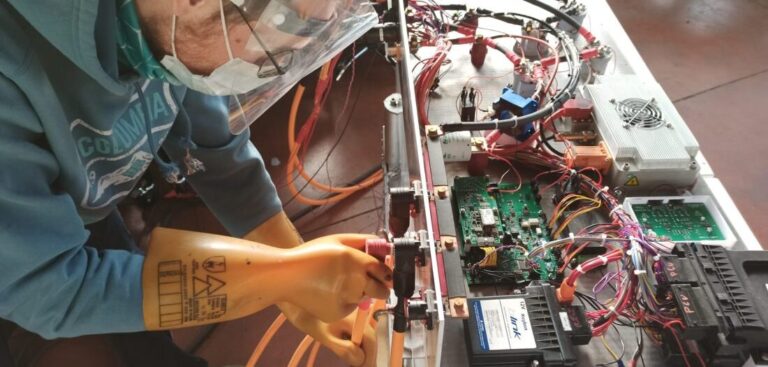Electric mobility company eDriveLAB, which has recently been acquired by Sealence, has released details of a newly designed battery for use within marine electric powertrains. Developed in conjunction with FPT Industrial, the new battery benefits from excellent energy density – comparable to that of the best EVs currently available on the market – and will not catch fire even in the event of a cell breaking down.
“There is no need to be alarmist about lithium battery technology,” explained Davide Lusignani, CEO, eDriveLAB. “The most established batteries on the market are already very safe and the greatest risk arises when addressing to unknown brands or companies that, despite ambitious proclamations, only have experience on low voltage 48V batteries and do not understand properly the risks associated with batteries currently in use in the segment of electric mobility, mostly in standard of 400V and 800V.
“Given that the safety systems are derived from automotive standards, and, on this, the contribution of FTP Industrial’s know-how was precious, we wanted to design a battery that would remain safe, even at the appearance of an imponderable and destructive event,” said Lusignani.
Designed from the demand for a fireproof battery, the solution is expected to be extremely safe, making it suitable (from a safety standpoint) for installation onto yachts and passenger ferries.
“We have engineered a product where lithium cells are immersed in a liquid solution that envelops them completely. This not only leads to an ideal cooling of the cells, but, with this approach, if a cell were to be damaged and catch fire, the phenomenon would not be able to propagate and infect the adjacent cells. It is obvious that the battery will have to be repaired or replaced, but we have practically eliminated the fire risks that, on some applications, such as boats, are events impossible to control,” said Lusignani.
“All the control electronics and the internal battery sensors, the so-called BMS, is entirely developed in eDriveLAB. It is an ecosystem of coordination and control of batteries that, thanks to intelligent proprietary algorithms coordinates multi-battery systems. It is able to ensure high modularity but, above all, redundancy, a key feature especially in certain contexts such as the naval one.”
Delivery of the first examples of this battery type are scheduled for delivery to Sealence in spring 2022, with large-scale supply expected to begin in early 2023.



